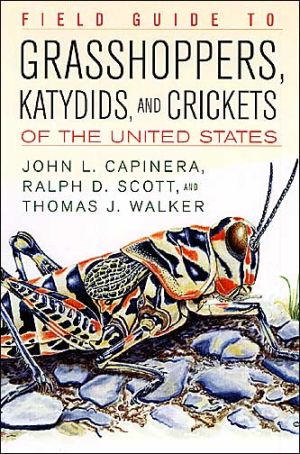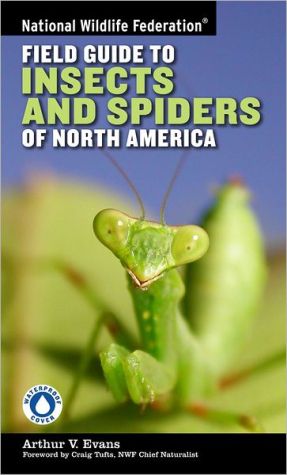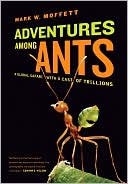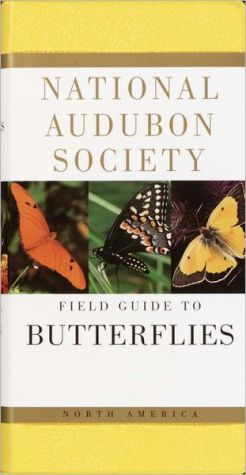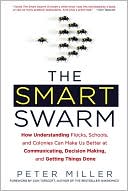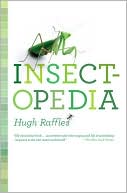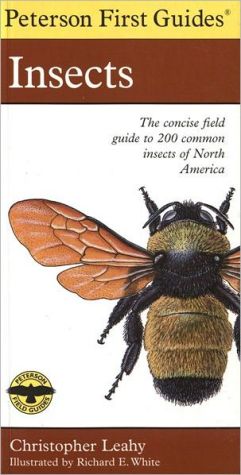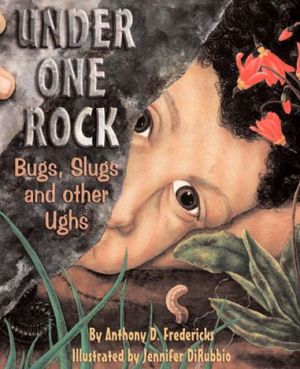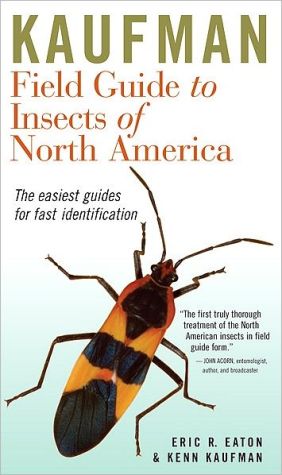Field Guide to Grasshoppers, Katydids, and Crickets of the United States
In much of North America, crickets and katydids provide the soundtrack to summer nights, and grasshoppers frequent the fields and roadsides of midsummer days. Although insects from this group have long been the bane of those who make their living from the land, grasshoppers, katydids, and crickets are themselves crucial food sources for many species of birds, reptiles and amphibians, and other creatures.Field Guide to Grasshoppers, Katydids, and Crickets of the United States introduces...
Search in google:
Capinera (entomology and nematology, University of Florida) introduces readers to the biology, behavior, and ecological significance of one of the most ecologically and economically important insect groups in North America. This is the first treatment of North American grasshoppers, katydids, and crickets to portray the insects in full color illustrations. The book is for amateur naturalists, students, and professional biologists. Annotation ©2004 Book News, Inc., Portland, OR
\ From the Publisher"Finally-a definitive guide to the identification of grasshoppers, crickets, and their allies from all corners of the country: with this book, a jar, and a sharp ear, alert naturalists can now track down and identify insect songsters."-Darryl T. Gwynne, University of Toronto at Mississauga, author of Katydids and Bush-Crickets: Reproductive Behavior and Evolution of the Tettigoniidae\ "This book is a great addition to the literature on Orthoptera: broad enough to cover a wide range of insects, but not so broad as to leave out important details. The identification sections of the species accounts are eminently readable, adding to the value of the book and broadening its appeal."-Kevin O'Neill, Montana State University, author of Solitary Wasps: Behavior and Natural History\ "This book is for anyone who has ever hiked or strolled through the open fields and forests of the U.S. in search of solitude and the sounds of nature. A walk in the sun through nearly any open field will put you in aural contact with high pitched 'sizzling,' ticking, or buzzing sounds from the many kinds of grasshoppers that inhabit those fields. On those summer days too hot for a stroll, perhaps an evening walk is more congenial: you might hear the very loud buzzes, or soft ticks, of the katydids or the sonorous chirps and trills of the many kinds of crickets that fill the night air with their tonal 'songs.' This book will provide readers with the means to deepen their understanding of the exact identity of each singer-it is both fun and challenging to test your ears against a world of sound that is comforting to hear and fascinating to understand. After all, those sounds are mostly produced by males which are singing to attract females for mating and if one is lucky, one can hear territorial and aggression songs produced by contesting males. For the dedicated birders who pride themselves in their ability to pick out birds by their songs alone, here is a new challenge. I can recommend this book for anyone interested in more than a surface understanding of the natural history of a remarkable group of insects-the acoustic insects. Moreover, it's about as authoritative a book as you'll ever find because the authors are unquestionably experts in their field."-Ron Hoy, Cornell University\ "Orthoptera, or grasshoppers and their relatives, are more frequently heard than seen. But once one starts looking, the most 'obvious' of insect groups . . . becomes readily apparent. For those who seek out orthoptera, this book is a perfect companion. . . . After introductions to the parts of the orthoptera body, and to its life cycle, ecological impact, sound production capabilities and viability as a pet, the authors evaluate the orthoptera species by species . . . . The highlight is certainly the 50 pages of Scott's color illustrations-this is apparently the first book to feature the full spectrum of North American orthoptera in color. For those who want to know what's plaguing them when locusts descend, this is the book."-Publishers Weekly, 14 February 2005\ "Often heard, seldom seen, katydids and crickets and their calls epitomize summertime. Also familiar are grasshoppers, flashing their often colorful hind wings in sudden flight. Yet most lay people know little about these abundant insects or how to identify them. Most existing publications are regional or technical; authored by Capinera and Thomas J. Walker, two University of Florida entomologists, and Ralph D. Scott, a Montana-based biologist and scientific illustrator, this first field guide to U.S. and Canadian orthoptera introduces 206 of the most common species (more than a third of the total), each with an excellent color painting by Scott. It explains classification, morphology (illustrated), biology, sound production, and collection and preservation, and presents pictorial keys to families and subfamilies. Species accounts include common name, scientific name, distribution, map, description, ecology, and similar species comparisons. By connecting us to the natural world, field guides play a crucial role in the environmental movement. This splendid guide fills a gap in that effort and is recommended to amateurs and professionals alike."-Library Journal (starred review) 1 April 2005\ "To study any living creature usefully, one must be able to identify it. Moreover, to the amateur naturalist, the ability to recognize and identify is an important part of the pleasure of observing the living world. John L. Capinera, Ralph D. Scott, and Thomas J. Walker have here produced a first-class example of a field guide, worthy of a place on the shelf of any North American naturalist."-Andrew Harvey, Times Literary Supplement, 10 June 2005\ "Here's the line on grasshoppers: Yes, a few species do build to plague levels, particularly in the Great Plains, but most are not as wildly gregarious. And, as Scott's paintings reveal, the grasshopper can be a resplendent creature, as beautifully panoplied as a medieval knight, down to the chevrons on its femur. Some have brilliant wings, flashed only in short flights as a mating display, in bands of orange, red, or blue. 'Some are pests, but many are just things of beauty,' said Capinera. . . . 'Some have beautiful songs, beautiful color patterns. I have been in places and seen them flying and you would think they were butterflies. They are really interesting insects.' The field guide is the first of its kind since the 1950s and the first to capture all types of grasshoppers in color. . . . With the help of this field guide, we can complete our own studies of this undervalued inhabitant of our gardens."-Adrian Higgins, Washington Post, 1 September 2005\ "This is not the sort of book one sits down with to read from cover to cover. Rather, it is a book to take to the field. Pictorial keys are used to help the reader sort out the larger subdivisions of the order Orthoptera. . . . The beautiful color portraits of grasshoppers, katydids, and crickets are designed to lead the collector to a correct identification of the speciman in hand. . . . Careful editing is evident throughout the book, and the book itself is sturdy enough to survive the field excursions it enthusiastically recommends."-J. Richard Gorham, Science Books and Films, July/August 2005\ "This volume represents an excellent compendium of carpenter ant biology and is well worth its modest cost."-Jeffrey J. Morrell, Quarterly Review of Biology, March 2006\ \ \
